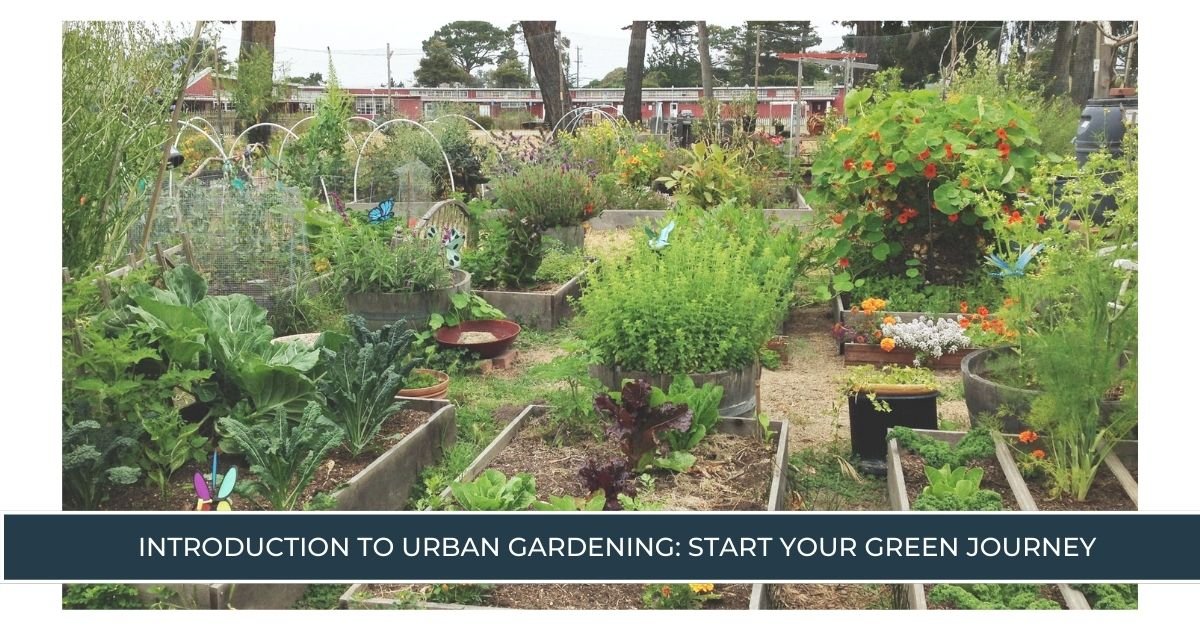Introduction to Urban Gardening: Start Your Green Journey
Urban gardening is transforming city landscapes, bringing green spaces to the concrete jungle. Whether you’re a seasoned gardener or a novice, this comprehensive guide will help you understand urban gardening, its benefits, types, techniques, and best practices. Dive in to start your green journey today!
What is Urban Gardening?
Urban gardening refers to growing plants in a city or urban environment. It encompasses a variety of gardening techniques and practices that utilize limited space, such as rooftops, balconies, community plots, and even indoor spaces. The aim is to cultivate fresh produce, herbs, flowers, and other plants, contributing to a greener, more sustainable urban life.
Importance of Urban Gardening
Query: Why is urban gardening important?
Urban gardening is more than just a hobby; it’s a movement towards sustainability and self-sufficiency. In cities where green spaces are limited, urban gardening helps combat pollution, reduce carbon footprints, and improve air quality. It also promotes mental well-being, provides fresh produce, and fosters community engagement.
Benefits of Urban Gardening
- Environmental Benefits:
- Reduces urban heat islands
- Enhances air quality
- Supports biodiversity
- Health Benefits:
- Provides access to fresh, organic produce
- Encourages physical activity
- Reduces stress and promotes mental health
- Social Benefits:
- Strengthens community bonds
- Provides educational opportunities
- Enhances neighborhood aesthetics
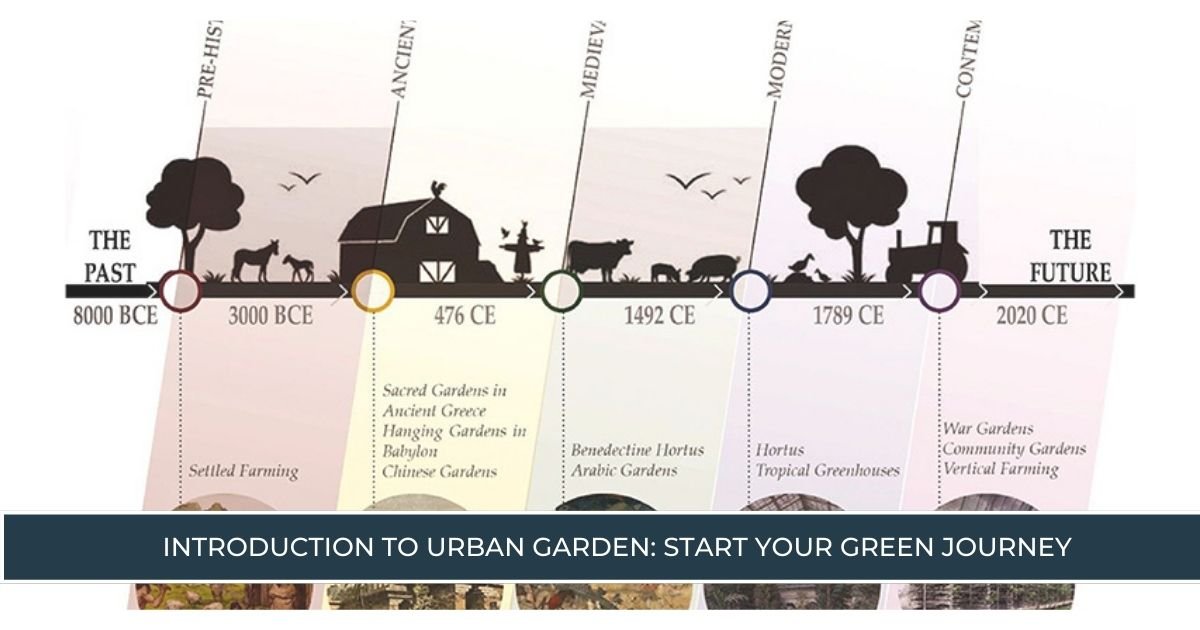
History and Evolution of Urban Gardening
Urban gardening isn’t a new concept. Its roots can be traced back to ancient civilizations where communal gardens were essential for survival. Over time, the practice has evolved, adapting to the needs and constraints of modern urban living.
Early Examples of Urban Gardens
Query: How did urban gardening start?
Ancient Mesopotamians and Egyptians practiced urban gardening to ensure food security. The Hanging Gardens of Babylon, one of the Seven Wonders of the Ancient World, is a prime example of early urban gardening.
Evolution and Trends Over Time
During the Industrial Revolution, urban gardening saw a decline due to rapid urbanization. However, World War I and II brought victory gardens, encouraging urban residents to grow their own food. In recent decades, there has been a resurgence in urban gardening due to growing environmental awareness and the farm-to-table movement.
Case Studies
- Denver Urban Gardens:
- Established to provide gardening opportunities in Denver
- Focuses on community involvement and sustainable practices
- Dogpatch Urban Gardens:
- A small urban farm in Des Moines, Iowa
- Emphasizes local food production and education

Types of Urban Gardens
Urban gardens come in various forms, each suited to different spaces and purposes. Understanding the types can help you choose the best fit for your needs.
Community Gardens
Query: What is a community garden?
These are shared spaces where individuals or groups grow plants collectively. They often provide plots to members and are excellent for fostering community spirit and sharing resources.
Rooftop Gardens
Query: What is a rooftop garden?
Ideal for city dwellers with access to flat roofs, rooftop gardens maximize unused space. They can range from simple container gardens to elaborate green roofs designed for insulation and water management.
Balcony Gardens (Urban Gardening Balkon)
Query: How to create a balcony garden?
Perfect for apartment residents, balcony gardens utilize vertical space with containers and hanging planters. They are ideal for growing herbs, small vegetables, and flowers.
Vertical Gardens
Query: What is vertical gardening?
These gardens use vertical structures to grow plants upwards, saving horizontal space. Techniques include wall-mounted planters, trellises, and hydroponic systems.
Indoor Urban Gardens
Query: How to start an indoor garden?
Indoor gardening uses natural or artificial light to grow plants inside homes. It’s great for herbs, small vegetables, and decorative plants, providing greenery year-round.

Getting Started with Urban Gardening
Starting an urban garden requires careful planning and consideration of your available space, resources, and plant preferences.
Assessing Your Space
Query: How to assess space for urban gardening?
Evaluate your available space, whether it’s a balcony, rooftop, windowsill, or backyard. Consider sunlight exposure, wind conditions, and accessibility.
Choosing the Right Plants
Query: What are the best plants for urban gardening?
Select plants that thrive in your environment. For beginners, herbs like basil, mint, and parsley are low-maintenance. Tomatoes, peppers, and lettuce are also great choices for urban gardens.
Essential Tools and Materials
- Containers: Pots, planters, or raised beds
- Soil: High-quality potting mix or compost
- Watering Tools: Watering can, hose, or drip irrigation system
- Gardening Tools: Trowel, pruners, gloves
Soil and Composting Basics
Query: What is the best soil for urban gardening?
Good soil is crucial for plant health. Use a mix that retains moisture and drains well. Composting kitchen scraps and garden waste enriches the soil, providing essential nutrients for your plants.
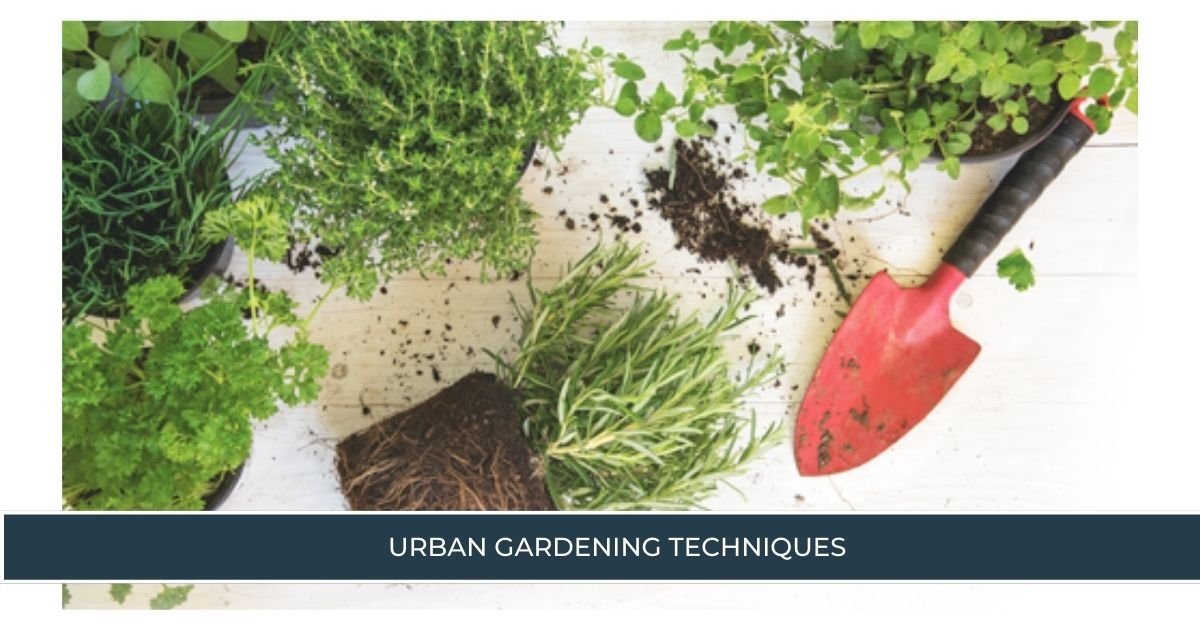
Urban Gardening Techniques
Different techniques can maximize your space and yield. Here are some popular methods:
Container Gardening
Query: How to start container gardening?
Container gardening involves growing plants in pots or planters. It’s versatile and perfect for small spaces, allowing you to move plants as needed.
Raised Bed Gardening
Query: What is raised bed gardening?
Raised beds are elevated garden beds that improve drainage and soil quality. They are ideal for areas with poor soil and provide easier access for planting and maintenance.
Hydroponics and Aquaponics
Query: What is hydroponics and aquaponics?
Hydroponics uses nutrient-rich water instead of soil to grow plants, while aquaponics combines hydroponics with aquaculture, using fish waste to fertilize plants. Both methods are highly efficient and suitable for indoor gardening.
Vertical Gardening Methods
Query: How to start vertical gardening?
Vertical gardening utilizes vertical space to grow plants. Methods include wall-mounted planters, hanging pots, and trellises. It’s an excellent way to grow more in limited space and add greenery to urban settings.
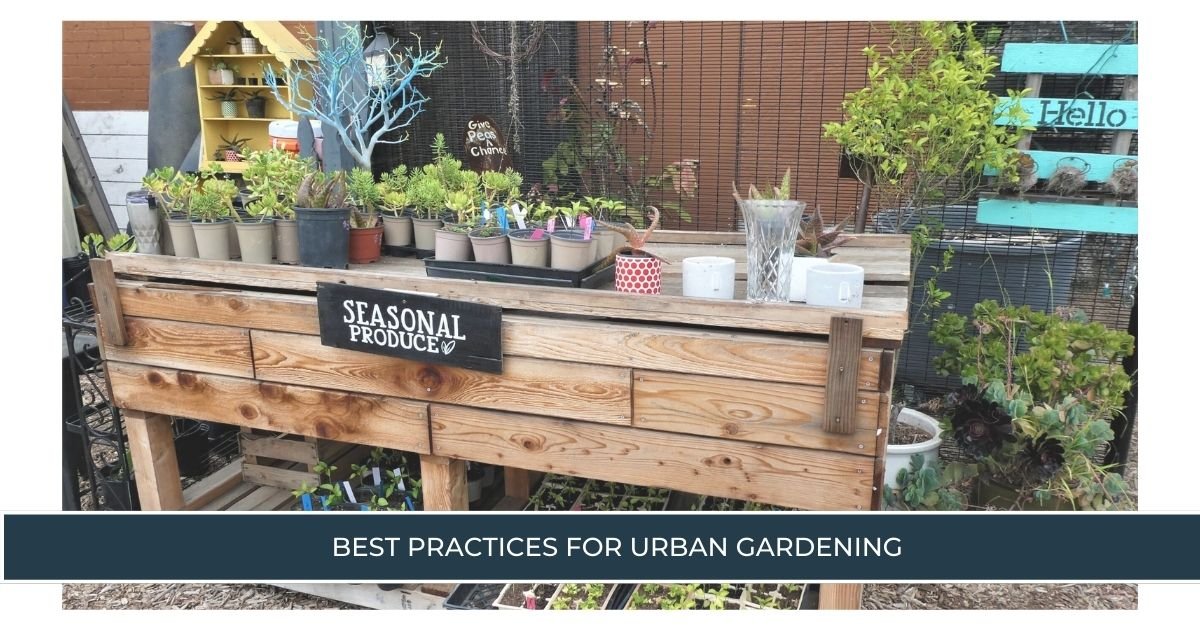
Best Practices for Urban Gardening
Adopting best practices ensures a successful and sustainable urban garden.
Watering and Irrigation Tips
Query: How to water urban gardens effectively?
Consistent watering is vital. Use drip irrigation systems to save water and provide uniform moisture. Mulching helps retain soil moisture and reduce evaporation.
Pest Control in Urban Settings
Query: How to control pests in urban gardening?
Prevent pests naturally by encouraging beneficial insects like ladybugs and using organic pest control methods. Regularly inspect plants and remove affected leaves to prevent infestations.
Organic Gardening Practices
Query: What are organic gardening practices?
Avoid chemical fertilizers and pesticides. Use compost and organic fertilizers to enrich the soil. Companion planting can deter pests and improve plant health.
Seasonal Gardening Tips
Query: How to garden seasonally in urban areas?
Understand the growing seasons in your area. Start seedlings indoors during colder months and transplant them outside when the weather warms up. Rotate crops to prevent soil depletion and pests.
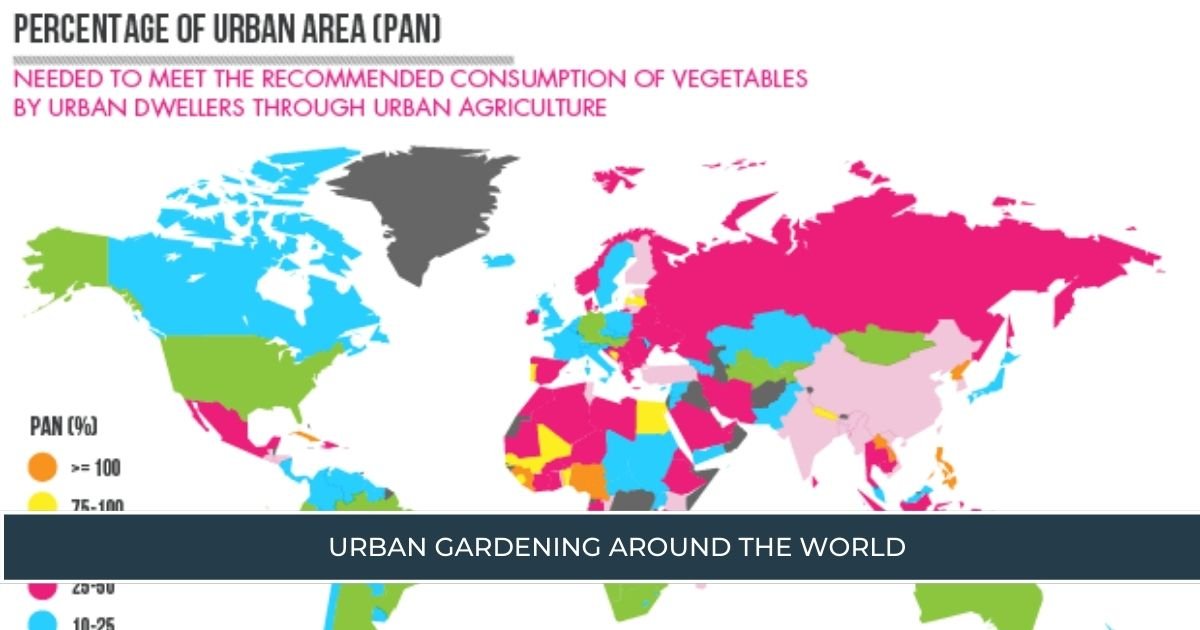
Urban Gardening Around the World
Urban gardening is a global phenomenon, with unique practices and innovations in different cities.
Urban Gardening in Berlin
Query: How is urban gardening in Berlin different?
Berlin is known for its community gardens and innovative green spaces. The city supports urban gardening through policies and initiatives that encourage citizen participation.
Urban Gardening in Hamburg
Query: What are urban gardening practices in Hamburg?
Hamburg’s urban gardening scene includes community gardens, rooftop farms, and green facades. The city’s focus on sustainability drives its green initiatives.
Urban Gardening in Frankfurt
Query: How does Frankfurt support urban gardening?
Frankfurt integrates urban gardening into its urban planning, promoting green roofs and community gardens as part of its environmental strategy.
Urban Gardening in Stuttgart
Query: What makes urban gardening unique in Stuttgart?
Stuttgart’s urban gardening projects focus on community engagement and education, with numerous public gardens and workshops.
Examples from Other Cities
- Beograd: Urban gardens in Beograd promote local food production and community collaboration.
- Lisbon: Lisbon’s urban gardening initiatives include rooftop farms and community plots, enhancing green spaces in the city.
- Rome: Rome integrates urban gardening into public spaces, combining traditional and modern practices to create lush urban environments.

Designing Your Urban Garden
Designing an urban garden requires creativity and practical planning to maximize limited space.
Principles of Urban Garden Design
- Functionality: Ensure easy access to plants and tools.
- Aesthetics: Create visually pleasing arrangements with varying plant heights and colors.
- Sustainability: Use recycled materials and water-saving techniques.
Urban Garden Architecture and Landscape Design
Query: What is urban garden architecture?
Incorporate architectural elements like pergolas, trellises, and vertical planters to add structure and beauty. Landscape design principles help create harmonious and efficient garden layouts.
Case Study: Hamra Urban Gardens
Hamra Urban Gardens in Beirut, Lebanon, is a model of innovative urban gardening. It combines green rooftops, vertical gardens, and community plots, creating a vibrant urban oasis.
Innovative Ideas for Small Spaces
- Use hanging baskets and wall-mounted planters.
- Incorporate multifunctional furniture with built-in planters.
- Opt for dwarf or compact plant varieties.
Community and Social Aspects of Urban Gardening
Urban gardening isn’t just about plants; it’s about people and communities coming together.
Building and Participating in Community Gardens
Query: How to join a community garden?
Join or start a community garden to share resources, knowledge, and produce. Community gardens often have plots available for rent and provide tools and support for gardeners.
Social Benefits and Community Engagement
Urban gardening fosters social interaction and community engagement. It brings people together, promotes cultural exchange, and creates a sense of belonging.
Educational Programs and Workshops
Query: Where to find urban gardening workshops?
Many urban gardens offer educational programs and workshops on gardening techniques, sustainability, and nutrition. These programs are valuable for schools, families, and individuals.
Tree T Pee: From Shark Tank Success to Agricultural Innovation
Urban Gardening Resources and Support
Various resources and support systems can help you succeed in urban gardening.
Local Organizations and Groups
Query: What local organizations support urban gardening?
Organizations like Denver Urban Gardens offer resources, training, and support. Joining local gardening groups provides access to a community of like-minded individuals.
Online Communities and Forums
Online communities and forums are excellent resources for advice, inspiration, and troubleshooting. Websites like Reddit, GardenWeb, and Facebook groups connect urban gardeners worldwide.
Government Programs and Incentives
Query: Are there government programs for urban gardening?
Many cities offer incentives for urban gardening, such as grants, tax breaks, and free workshops. Check with local government agencies for available programs.
Books, Blogs, and Other Media Resources
Query: What are the best resources for urban gardening?
Books like “The Urban Gardener” by Matt James and blogs like UrbanOrganicGardener.com provide valuable information and inspiration. Podcasts and YouTube channels are also great resources.
Challenges and Solutions in Urban Gardening
Urban gardening comes with its own set of challenges, but solutions are available.
Common Challenges Faced by Urban Gardeners
Query: What are the challenges in urban gardening?
- Limited Space: Finding suitable areas for gardening can be difficult.
- Pollution: Urban environments may have higher levels of pollutants.
- Water Management: Efficient watering is crucial in urban settings.
Solutions and Tips to Overcome Challenges
Query: How to overcome urban gardening challenges?
- Maximize Vertical Space: Use vertical gardening techniques to grow more in less space.
- Soil Testing and Remediation: Test soil for contaminants and use raised beds with clean soil.
- Rainwater Harvesting: Collect and use rainwater to reduce dependency on municipal water supplies.
Success Stories and Inspiration
Look to successful urban gardening projects for inspiration. Stories from cities like New York, Tokyo, and Paris highlight innovative solutions and community-driven efforts.
Future of Urban Gardening
Urban gardening is poised to play a significant role in the future of sustainable urban living.
Emerging Trends and Innovations
Query: What are the future trends in urban gardening?
- Smart Gardening: Use of technology for efficient watering, monitoring, and maintenance.
- Urban Farms: Large-scale urban farms providing local produce to city dwellers.
- Green Infrastructure: Integration of gardens into urban planning and architecture.
Impact of Urban Gardening on Sustainability and Urban Planning
Urban gardening contributes to sustainability by reducing food miles, enhancing biodiversity, and improving air quality. It also influences urban planning by integrating green spaces
into city designs.
Predictions for the Future of Urban Gardening
Query: What is the future of urban gardening?
The future of urban gardening includes increased adoption of smart technologies, more community-driven projects, and greater emphasis on sustainability and resilience in urban planning.
Conclusion
Urban gardening offers numerous benefits, from environmental sustainability to improved mental and physical health. It fosters community engagement and provides fresh, local produce. Whether you have a small balcony or access to a rooftop, there are endless possibilities to explore in urban gardening. Start your green journey today and contribute to a healthier, more sustainable urban environment.
Final Tips and Resources
- Start small and gradually expand your garden.
- Choose plants suitable for your local climate and conditions.
- Join local gardening groups for support and inspiration.
- Keep learning and experimenting with new techniques and plants.
Urban gardening is a rewarding and impactful way to make cities greener and more livable. Embrace the challenge and enjoy the fruits of your labor—literally!
